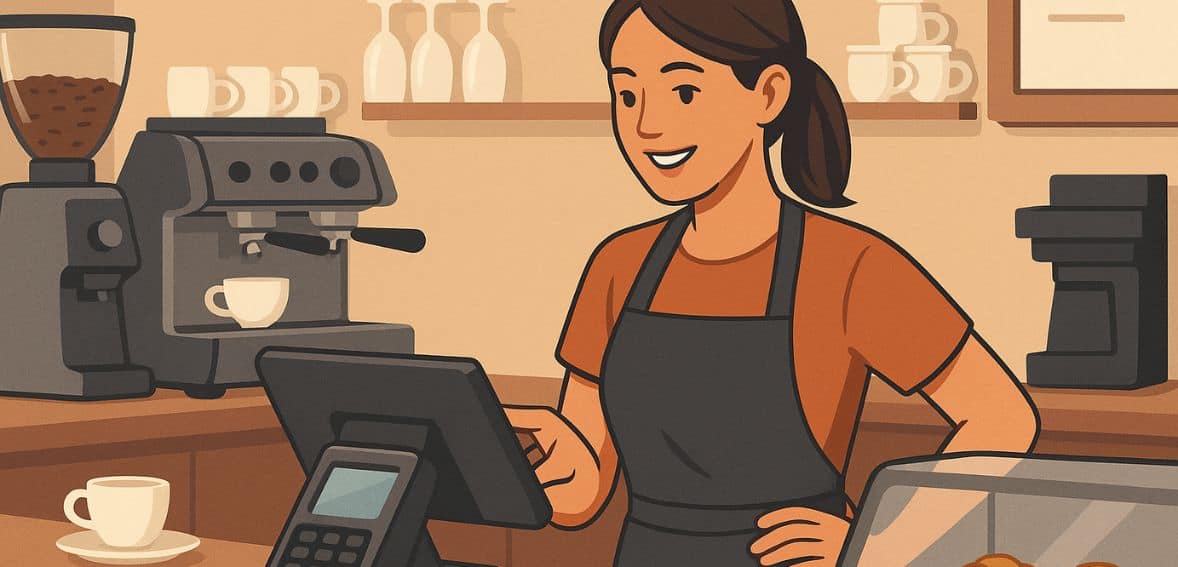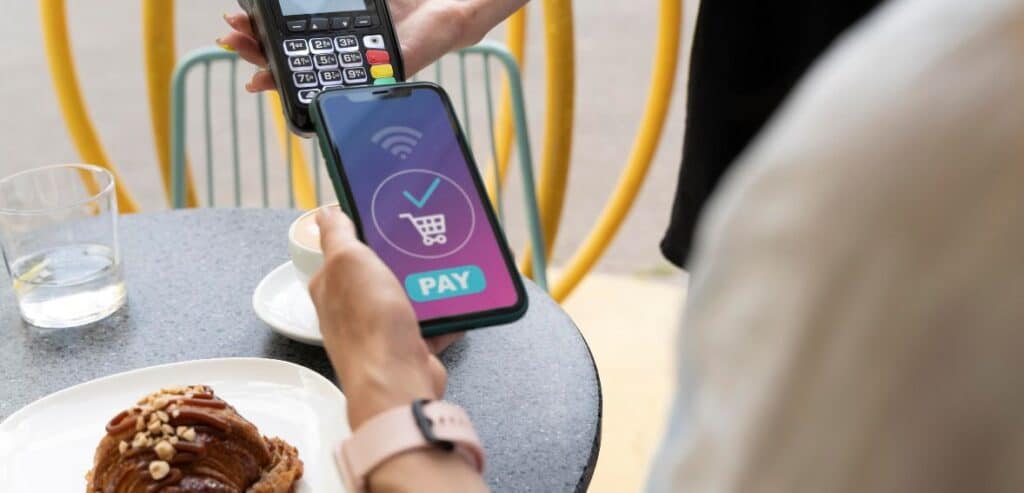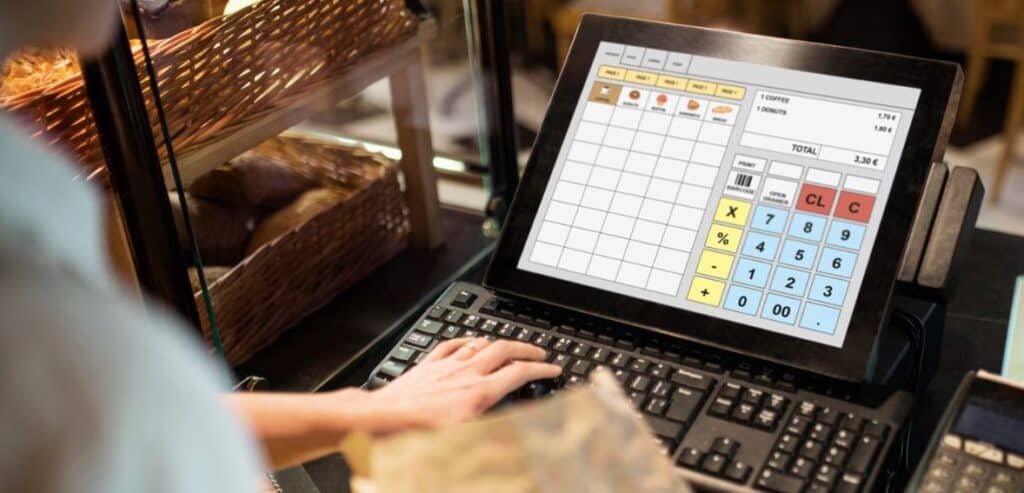
By Cole King July 24, 2025
The aroma of freshly brewed espresso, the ambiance of the cafe, and the cadence of service that keeps the line moving and the tables full are frequently used to evaluate a great cafe experience. However, a crucial system that operates in the background to keep everything together is the point-of-sale (POS) system.
Although it might not receive as much attention as your artisan pastries or signature roast, a point-of-sale system can be the lifeblood of your cafe’s operations if it is properly selected. In today’s technologically advanced coffee industry, accepting payments isn’t the only thing to consider. Every aspect of your business, from handling orders during peak hours to keeping track of your daily stock, should be understood by your point-of-sale system.
Making the right choice can result in more time spent doing what you want to do, happier customers, and more efficient workflows.
Understanding the Cafe Environment and Workflow

Cafes function in a hybrid setting as opposed to full-service dining establishments or fast-food chains. Before nine o’clock, people are getting their morning brew, placing quick orders at the counter, and spending hours seated in front of laptops. Your POS system needs to be able to adjust to the distinct rhythm that this diversity produces. A universal register system will not work.
Customers expect a flawless order-to-pickup experience, and your employees must work quickly without compromising order accuracy. Quick service, simple adjustments, and clear communication between the front of house and the prep or kitchen stations are all features of the ideal point-of-sale system.
Why Not All POS Systems Are Created Equal
Although there are many different POS systems available, not all of them are designed with a cafe’s unique requirements in mind. Many are made for large restaurants or retail establishments, so attempting to fit them into a coffee shop setup can lead to more issues rather than fixes.
A POS designed for cafes must strike a balance between simplicity and speed while allowing for a small amount of customization. It should have an easy-to-understand interface that doesn’t require a training manual. Because of the high rate of employee turnover in this sector, your system needs to be simple to understand and operate right away.
For inspiration on what works best, explore some of the leading POS for coffee shops specifically designed for small café environments.
Order Customization and Quick Turnarounds Matter

Cafe customers are known for their preferences. Almond milk rather than whole milk. Very hot. Not two pumps, just one. Your staff should be able to swiftly enter personalized drink or food orders with the correct POS without creating a bottleneck.
Here, adaptability is essential. Time is lost and frustration is increased if your team must struggle with workarounds or navigate complex menus in order to add a drizzle of caramel. Order entry should be as flexible and quick as your customers want with your point-of-sale system.
Integrated Payment Processing: Simplicity Is Key

The checkout process is smooth when your POS and payment system function together. This integration minimizes the headaches associated with reconciliation at the end of the day, speeds up transactions, and lowers errors. Whether your customers pay online, swipe a card, or tap their phone, the transaction should be quick, safe, and traceable.
You don’t want to cope with incompatibilities or delays in third-party processing. Additionally, integration facilitates unified reporting, which eliminates the need to patch disparate systems and makes it simpler to see what is selling and when.
Inventory Control That Keeps You Stocked, Not Stuffed
It can be expensive to realize you have too many pastries that will go bad by tomorrow or to run out of oat milk in the middle of a busy shift. Real-time inventory tracking, reorder alerts, and even future demand prediction based on past trends are all made possible by a smart point-of-sale system.
Knowing your stock levels without doing manual checks saves time and money for a cafe that sells perishable goods and has narrow profit margins. A good point-of-sale system should automatically update inventory with each sale and provide you with a summary of what is and is not moving.
Employee Management That Doesn’t Eat Into Your Time
You should be able to better manage your team with the aid of your POS. This covers scheduling features, sales per employee, and clock-in and clock-out tracking. You can keep an eye on who is performing, identify any gaps, and make sure labor costs don’t rise without warning with a good system.
Role-based access should also be supported so that managers can examine the data and make well-informed decisions, while your baristas can see what they need.
Customer Loyalty and Personalization That Keep Guests Coming Back
Many cafes rely heavily on their regular customers. You can collect customer data and reward repeat business with a point-of-sale system that incorporates or integrates with a loyalty program. You want to know who your customers are, what they like, and how frequently they visit.
Personalization increases customer loyalty and boosts sales, whether it’s by sending a birthday discount or providing a free drink after ten purchases. It’s also very easy to implement when your point-of-sale system keeps track of everything for you.
Seamless Reporting and Real-Time Insights for Smarter Decisions
Your decisions should be based on facts, not intuition. You can gain real-time insights into what is and is not working with the correct point-of-sale system. How is the new sandwich doing? Are Tuesdays seeing a decline in sales? Does one barista outperform the others in terms of upselling?
You can manage your business more proactively with reports on inventory turnover, sales trends, and customer behavior. Instead of responding to problems after they arise, a data-enabled point-of-sale system gives you clear, confident control.
Mobile and Contactless Payments Are Now a Must

Ten years ago, cash-only registers might have been effective, but modern consumers demand better. Digital and contactless payment methods, such as Apple Pay and tipping via QR codes, are ingrained in cafe culture.
To make it simple for customers to pay however they choose, a contemporary point-of-sale system needs to support a large variety of payment methods. In addition to increasing customer satisfaction, this expedites service and lowers friction during peak hours.
Scalability: From Local Favorite to Neighborhood Chain
A scalable point-of-sale system helps you get ready for expansion, even if you currently only have one location. Your POS should grow with you, whether that means adding a catering division, opening a second location, or introducing an online ordering system.
Seek out systems that let you easily share data between stores or manage several locations from a single dashboard. You can avoid a painful upgrade later by selecting a flexible system now.
POS Support and Uptime: Quietly Crucial Until It Isn’t
A system crash is one of the fastest ways to ruin a busy cafe. When everything is going well, POS support might not seem urgent, but when the register freezes in the middle of a rush or the credit card reader malfunctions, prompt assistance is crucial.
You need a supplier who has a track record of standing behind their technology, responsive customer service, and dependable uptime. To find out what kind of assistance you can expect in the event that the system fails, check user reviews, support hours, and availability.
The Price vs. Value Debate for POS Software
The best value and the least expensive point-of-sale option frequently differ significantly. Although a low-cost system may save you money up front, it may cost you more in lost revenue, inefficiencies, or even interchange rates you didn’t expect.
Reliable performance, necessary features, and consistent support are all provided by a high-value point-of-sale system without any unnecessary extras. Consider your point-of-sale system as an investment in operational excellence that will pay for itself in the form of improved customer satisfaction, more efficient service, and better decision-making.
Navigating Integration with Existing Systems

Although having a POS system with lots of features is appealing, cafe owners also need to think about how well it will work with their current configuration. A smooth integration between accounting software and staff scheduling software can result in fewer problems later on. A point-of-sale system may cause more issues than it fixes if it establishes silos or necessitates workarounds in order to integrate with your existing workflows.
An effective system should function as a center rather than a barrier, allowing payroll coordination, tax computations, and inventory updates to happen organically. When the change feels more like a natural improvement than a total makeover, cafe owners gain the most. Time is saved, training curves are lowered, and the emphasis remains on customer service and business expansion.
Customization and the Cafe Experience
Your point-of-sale system ought to take into account the fact that different cafes function differently. Making your service feel unique requires personalization, whether you’re serving seasonal tasting menus, locally sourced pastries, or pour-over brews. Your distinctive touch is guaranteed at every point of sale with a system that enables you to customize order options, alter menu layouts, and control pricing for daily specials.
To keep operations flexible and customer-focused, even minor things like labeling modifiers (almond milk, extra shot, gluten-free) or scheduling promotions can make a big difference. Adjusting and evolving your cafe’s offerings without having to jump through technical hoops is made simple by the best point-of-sale systems. Daily transactions become more seamless and intuitive when your system adapts to your rhythm rather than the other way around.
Conclusion: A POS That Serves You While You Serve Others
Running a cafe is as much about the experience as it is about the espresso. Your POS system is the invisible partner that keeps the coffee flowing, the shelves stocked, and your customers smiling. Choosing the right one means understanding your own business as well as the capabilities of the systems available.
From order entry to customer loyalty, from employee scheduling to payment processing, every function matters. With the right technology in place, you can spend less time on logistics and more time doing what you do best—serving your community one cup at a time.